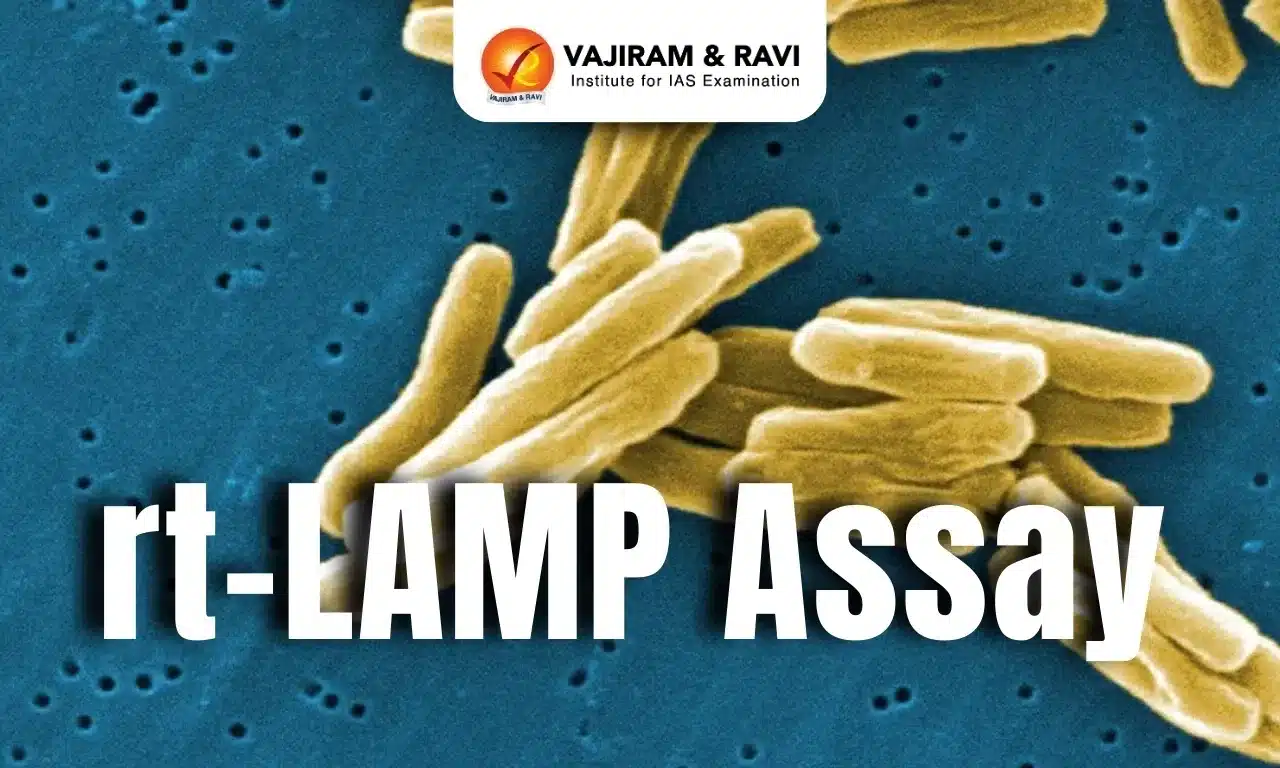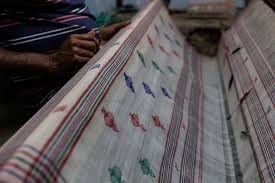rt-LAMP Assay Latest News
Researchers from Sree Chitra Tirunal Institute for Medical Sciences and Technology (SCTIMST), Thiruvananthapuram, have successfully developed a novel, indigenous, real-time LAMP (rt-LAMP) assay for the early detection of Tuberculosis (TB).
What is the rt-LAMP Assay?
- The rt-LAMP assay is a molecular diagnostic tool similar to GeneXpert and Truenat, providing high sensitivity and specificity. It can detect TB DNA even when only 10 copies per microlitre are present, enabling early-stage diagnosis.
- Unlike RT-PCR, which requires three different temperature cycles, **rt-LAMP works at a single temperature, simplifying the testing process.
- The test uses six primers for DNA amplification (compared to two in RT-PCR), ensuring faster and more specific detection.
- The researchers used a fluorescent dye (Syto 16)—commonly used in cell biology—which does not inhibit the reaction, solving the long-standing issue of false negatives in earlier LAMP tests.
- Results can be detected in 10–20 minutes, significantly reducing diagnostic time compared to RT-PCR.
Regulatory Status
- The rt-LAMP assay has been licensed to the industry for production.
- It has received approval from the Central Drugs Standard Control Organisation (CDSCO).
- The Indian Council of Medical Research (ICMR) is currently validating the technology.
- The World Health Organization’s Health Technology Access Pool (HTAP) also evaluates the test, pending ICMR validation.
Significance for India’s TB Control Strategy
- As of 2023, around 79% of presumptive TB cases in India were still being diagnosed using sputum smear microscopy, while only 21% used molecular tests.
- Despite the rise in molecular testing labs (from 5,090 in 2022 to 6,496 in 2023), India still falls short of the targets set under the National Strategic Plan (2017–2025) to reduce reliance on smear microscopy.
- The indigenous rt-LAMP assay could help bridge the diagnostic gap, by providing a low-cost, rapid, scalable, and accurate alternative to outdated smear techniques.
- It supports the National TB Elimination Programme (NTEP) by enabling faster case detection, reducing disease transmission, and improving public health outcomes.
rt-LAMP Assay FAQs
Q1: What is the rt-LAMP Assay?
Ans: Reverse Transcription Loop-Mediated Isothermal Amplification (rt-LAMP) is a rapid molecular diagnostic technique to detect RNA pathogens (e.g., viruses) by amplifying genetic material at a constant temperature, eliminating the need for complex thermal cycling.
Q2: How is rt-LAMP significant for public health?
Ans: It enables quick, low-cost detection of diseases like COVID-19 and dengue in resource-limited settings, delivering results in 30–60 minutes.
Q3: What are its advantages over PCR?
Ans: It requires minimal equipment, has faster results, and works without RNA extraction, making it suitable for rural and field diagnostics.
Source: TH
Last updated on December, 2025
→ Check out the latest UPSC Syllabus 2026 here.
→ Join Vajiram & Ravi’s Interview Guidance Programme for expert help to crack your final UPSC stage.
→ UPSC Mains Result 2025 is now out.
→ UPSC Notification 2026 is scheduled to be released on January 14, 2026.
→ UPSC Calendar 2026 is released on 15th May, 2025.
→ The UPSC Vacancy 2025 were released 1129, out of which 979 were for UPSC CSE and remaining 150 are for UPSC IFoS.
→ UPSC Prelims 2026 will be conducted on 24th May, 2026 & UPSC Mains 2026 will be conducted on 21st August 2026.
→ The UPSC Selection Process is of 3 stages-Prelims, Mains and Interview.
→ UPSC Result 2024 is released with latest UPSC Marksheet 2024. Check Now!
→ UPSC Prelims Result 2025 is out now for the CSE held on 25 May 2025.
→ UPSC Toppers List 2024 is released now. Shakti Dubey is UPSC AIR 1 2024 Topper.
→ UPSC Prelims Question Paper 2025 and Unofficial Prelims Answer Key 2025 are available now.
→ UPSC Mains Question Paper 2025 is out for Essay, GS 1, 2, 3 & GS 4.
→ UPSC Mains Indian Language Question Paper 2025 is now out.
→ UPSC Mains Optional Question Paper 2025 is now out.
→ Also check Best IAS Coaching in Delhi

















